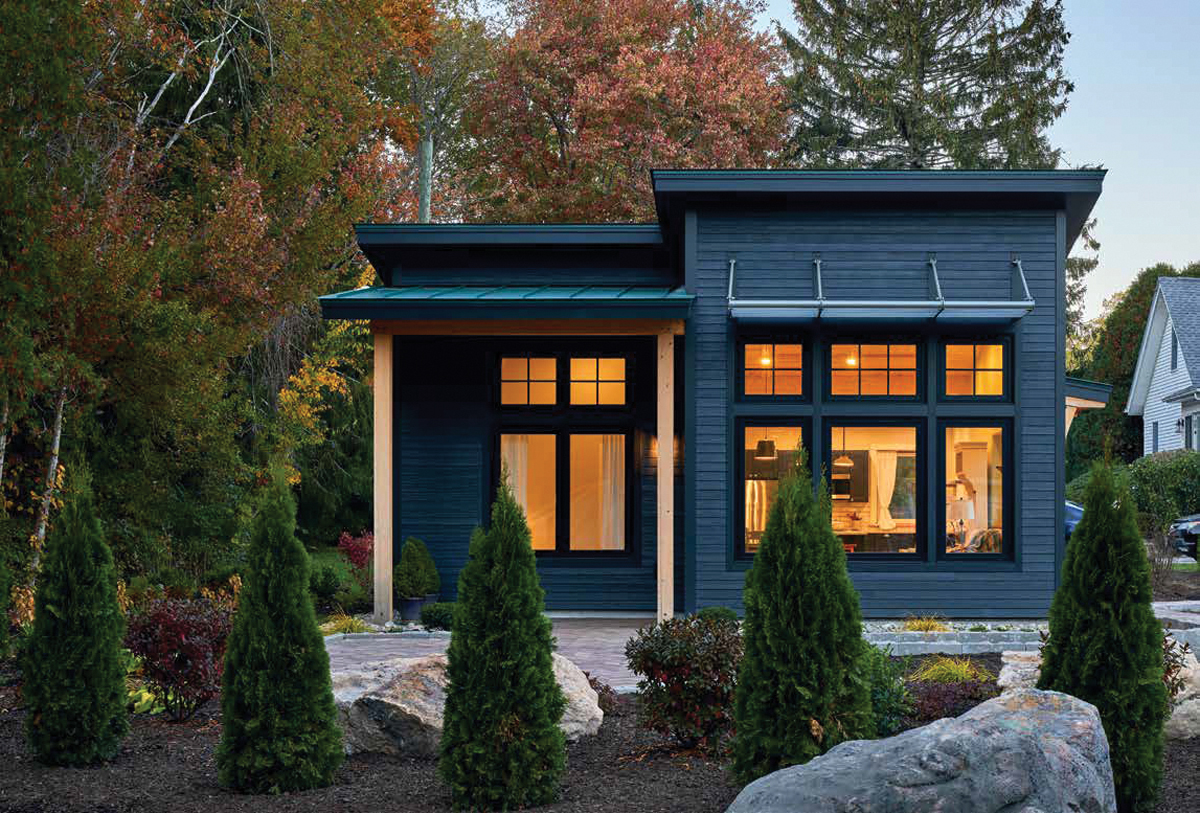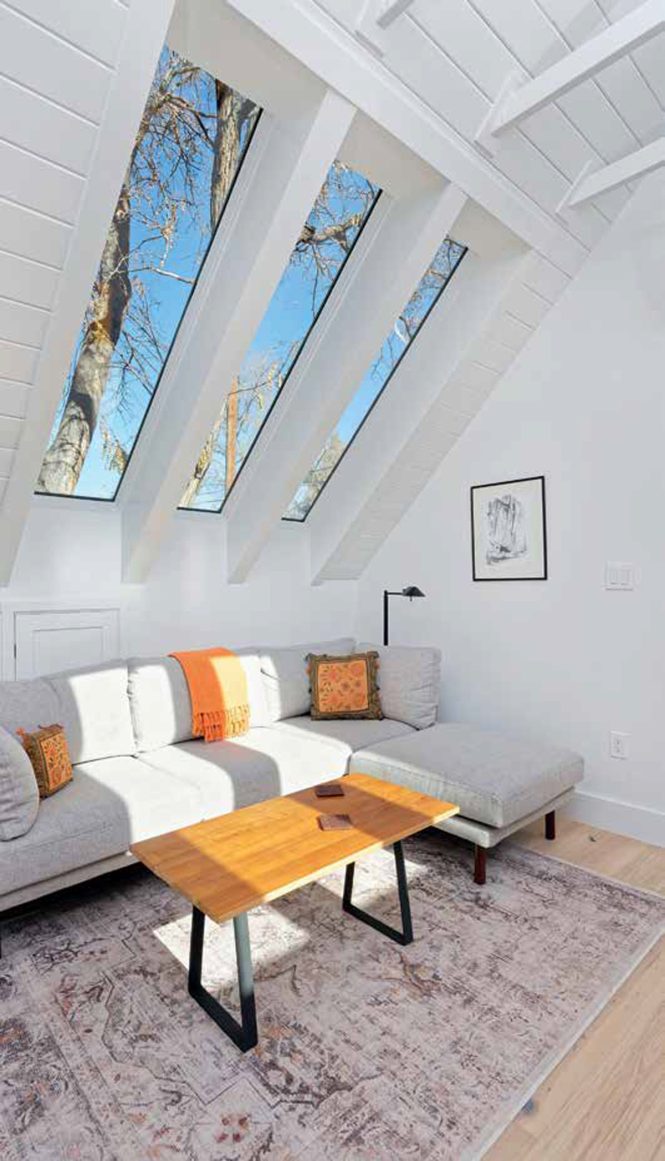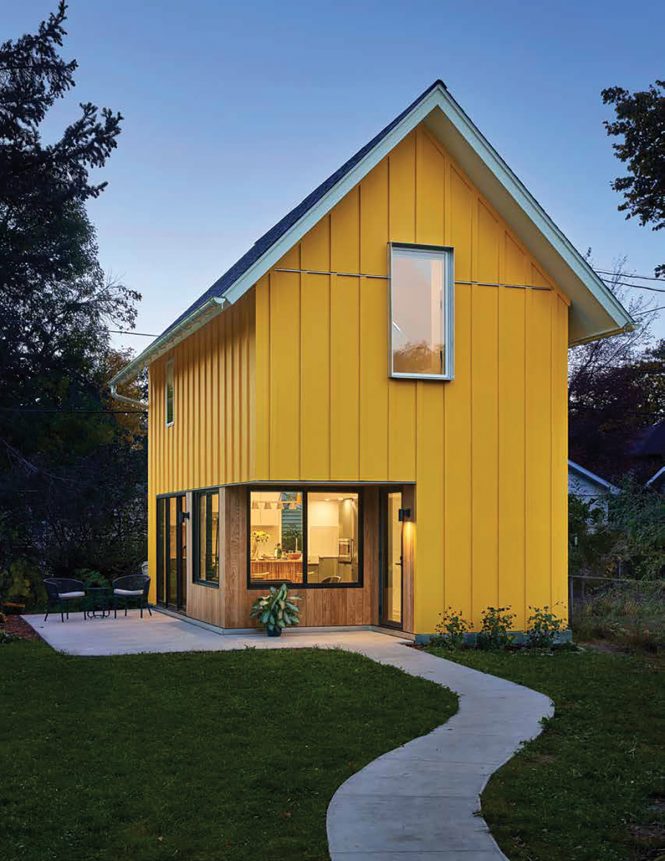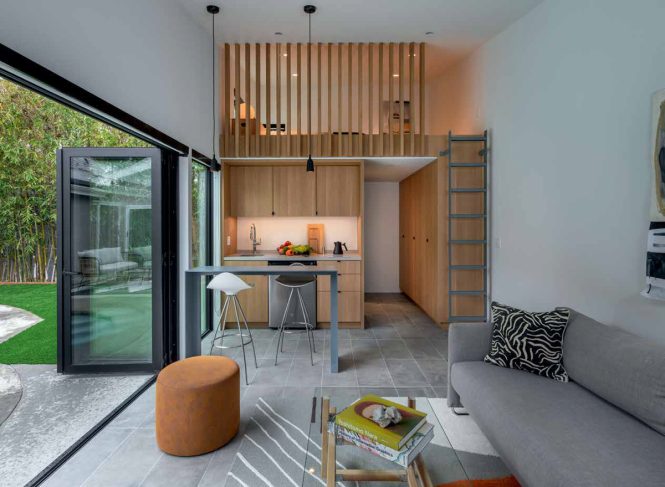Small Space, Big Impact: The Possibilities of Accessory Dwelling Units (ADUs)
By Dalvin Aboagye | Spring 2024 | Design Feature
Like much of the country, the housing crisis has put a squeeze on residents, new and old, in the Hudson Valley. In the last few years, a confluence of factors has pushed some municipalities like Newburgh and Kingston to go so far as to declare housing emergencies. A wave of newcomers post-COVID, the rise of short-term rentals, and persistent problems in zoning and new construction have made the prospect of renting and buying in the region unaffordable for many. The debate on how to deal with these issues rages on as multiple stakeholders, from village mayors to state officials, disagree on best practices. How do add housing to a region many move to escape the density of large urban centers?
The partial answer may lie in the backyards, basements, attics, or other auxiliary spaces of existing properties. Accessory dwelling units, or simply ADUs, add secondary units to existing housing by renovating these nooks and crannies into modest living chambers. “ADUs are one of the fastest-growing trends in residential housing in North America. Every month it seems another municipality is attempting to pass zoning regulations to allow ADUs in their areas or is updating those already in place,” journalist and author Sheri Koones explains in her latest book, ADUs: The Perfect Housing Solution. “The growth of ADUs has been spurred on by the decline in entry-level housing options, the desire for easier access to jobs, and the increase in multigenerational living (with older and younger adults wanting to live close to family).”
Intergenerational Appeal
The underlying appeal of ADUs is a simple one; solve a housing shortage issue anywhere by building more living spaces everywhere. Sometimes called granny flats or in-law units, ADUs add to the housing supply by putting basement and garage conversions, guest houses, additional floors, and other secondary units on the market for rent by property owners. They’re inconspicuous, blending into neighborhoods better than a new multiplex or other large developments, and could be invaluable tools in combating the housing crisis.

Multiple skylights make this room in a Denver ADU designed by Simple Homes feel more spacious.
Photo by Zachary Cornwell
“Some homeowners are motivated to build an ADU because it can increase the value of their home by as much as 35 percent in those areas where they are zoned,” Koones writes. “An ADU provides housing for those people looking for a smaller house. Millennials in general have smaller families, so they need less space, and, being an environmentally conscious generation, they prefer to use less energy to heat and cool their homes. Boomers need less space when they are empty-nesters, and many try to reduce their expenses when they stop working.” With that kind of intergenerational appeal and versatility, it’s no wonder there are already 1.5 million ADUs in the US, and they’re growing at a rate of about nine percent a year.
Supplying Housing
In the Hudson Valley, some programs and regulatory changes aimed at making ADUs a staple of the housing landscape have popped up these last few years. Last year, a $1.75 million state grant from the New York State Homes and Community Renewal was given to Ulster County to help build about a dozen or so code-compliant ADUs, with $125,000 being set aside for residents who are awarded funding through the Plus One Home program. And in the fall of 2022, the Beacon City Council paved the way for easier add-on unit approval and construction through new changes to the zoning code. Along with increasing the housing supply, many of these moves include provisions preventing these units from turning into short-term rentals to serve local, long-term residents.

A 780-square-foot ADU in St. Paul, Minnesota designed by Christopher Strom Architects.
Photo by Alyssa Lee Photography
“ADUs are adding density to communities without homeowners having to build larger homes and optimally without large multiplexes being built for additional housing in the area. Building standards for them are often stricter than for the main house, making them environmentally friendly. They provide housing for people who might not be able to otherwise live in these communities, while adding needed income for homeowners,” Koones writes in her book.
Aesthetically, the look and feel of an ADU is limited only by the architecture and construction involved. In other housing-strapped municipalities like Los Angeles, homeowners have taken full advantage of ADUs by melding modern home design and sustainability. In one use case, the Plymouth ADU, Koones showcases how LA homeowners Leslie-Anne Huff and Reggie Panaligan expanded their living space by constructing an ADU behind their main home where a carport used to be.

What they ended up with was a 370 square feet fully functional living space—equipped with a kitchen, bathroom, workspace, and loft—kept comfortable by a cool-roof system, heat pumps, and other energy-efficient products. “Throughout the ADU, every formal move and architectural element from the scale of the building to furniture and finish was designed to contribute to an atmosphere of lightness and usability without impeding circulation,” project manager Jesse Chappelle explained in the book.
On a national level, ADUs promise real change while largely maintaining the visual landscape of an area. And the popularity and intent is there. A recent survey by California homebuilding company Villa found that a fifth of homeowners added ADUs specifically to help create new affordable housing in their area. With that kind of momentum growing on a rural, suburban, and urban level, we could be that much closer to making space for everyone here and across the country.
